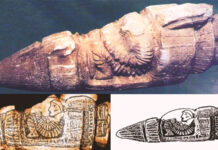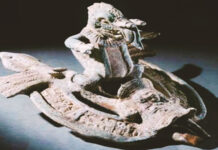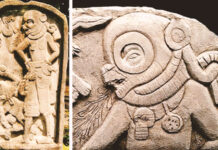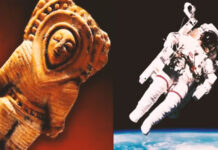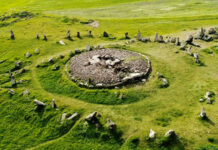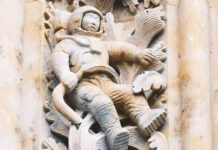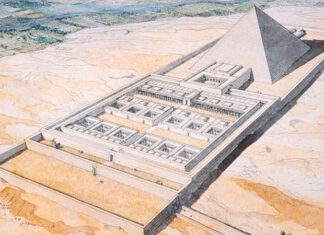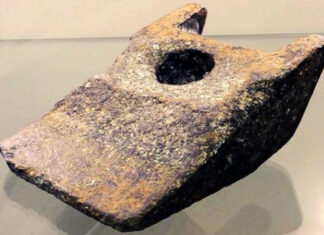Puma Punku is what remains of a sacred site in the jungles of Bolivia that has attracted a lot of attention recently. The name means “Puma’s Gate” and, according to traditional archaeologists, Puma Punku was an ancient and prosperous city that originated around the 500s and 600s.
But the mysteries about this fascinating site just keep growing, puma punku’s heavy stone block structures have been cut so precisely that the use of unknown and highly advanced ancient technology seems to be the only explanation.
Located near the city of La Paz, capital of Bolivia, Puma Punku is situated in the still thriving city of Tiwanaku, high on a desert plateau of the Andes, at an altitude of more than 3,500 meters, which according to Inca traditions, is the place where the world was believed to have been created.
Megaliths are among the largest on the planet, some weighing several tons, and although many of the structures are still standing centuries after the disappearance of their inhabitants, most of the buildings are broken and scattered around the area, leaving researchers wondering what could have caused this to these incredibly heavy buildings.
Monuments Beyond Human Capacity?

Puma Punku was an extremely advanced architectural achievement, the Spanish and other conquerors who visited the site during the 16th and 17th centuries described it as a “wonderful, though unfinished building with gates and windows carved into unique blocks”, which exhibited an unparalleled level of skill in the pre-Columbian New World and is often considered the architectural pinnacle of Andean lithic technology before the arrival of Europeans.
Even today, the stone work of the temple is considered so accurate that ancient astronaut theorists claim it was done by some kind of laser and other extraterrestrial technologies.
Researcher David Childress noted that large pieces of granite were apparently scattered like blocks of children’s toys, as if a giant cataclysm had devastated Puma Punku at once. “Archaeologists are baffled by what Puma Punku was and what it looked like and the purpose of the huge structures has not yet been explained,” Childress says.
An undeniable fact, however, is that the entire region and its people were important in the ancient South American world. Their culture was dominant in the Lake Titicaca basin, with an empire covering a vast area in present-day Bolivia, Peru and Chile.
Shortly after World War II, Austrian archaeologist Arthur Posnansky devised a hypothesis that was far ahead of its time. Posnansky worked at the site for decades and estimated that Puma Punku was much older than the academics supposed. While examining the ruins and their relationship to the stars, the archaeologist dated the ruins to an impressive 15,000 years old.
His records and writings on the Puma Punku stones in Tiwanaku were kept alive by Graham Hancock and other writers who prefer Posnansky’s date of the site to support his theories.
Some of Puma Punku’s structures reach 8 meters high and weigh 130 tons, and as in countless other sites that feature megalithic structures crafted of such weight and size, the question remains about how primitive peoples could have created perfect right angles and circular holes in the stones only with hammers and primitive chisels.
Even today, the modeling of these megaliths could only be carried out with advanced saws and diamond-tipped drills, which raises the question of the possibility of ancient aliens in Puma Punku, with a technology that still remains ignored.
The Mystery Remains
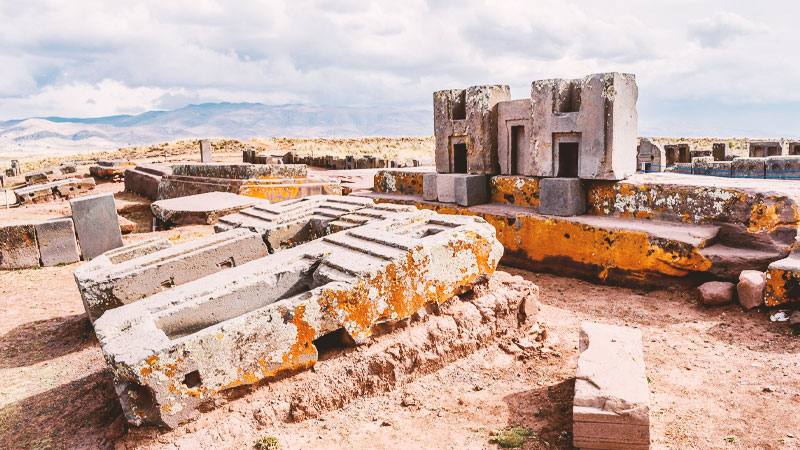
Some skeptics claim that alien theory is absurd, Brian Dunning, author of several books on scientific skepticism, described the row of H-shaped blocks of the place with approximately 80 faces, and all combining with each other with great precision.
“These stones suggest a prefabrication not found elsewhere in Tiwanaku. In addition, some of the stones were held together with copper claslets, some of which were cold molded and others that were placed in place cast,” Dunning wrote.
Dunning applied logic to the mystery, suggesting that perhaps the Puma Punku blocks were not carved, but rather modeled using concrete or some similar material. However, no evidence so far has supported the theory of prefabricated concrete.
Although Puma Punku remains a crowning achievement of Andean architecture and rivals other sites found around the world, scientists have very few answers on the most basic questions of who, what, when and why.
Modern archaeologists are unwilling to consider the idea of using lasers, alien visits or supernatural means of transporting blocks of stone for miles without any mechanized vehicles. So where does that leave us?
Regardless of the opinions of skeptics, the Puma Punku mystery persists, because no scientist so far has given a plausible explanation for the buildings and how they were built.
But we can add one more possible clue to this story. The mummies of Puma Punku, preserved in one of Tiwanaku’s holiest sites, provide evidence that all members of society, from babies to the elderly, regularly used psychoactive plants.
Now we can only know if their incursions into other dimensions through these psychoactives offered these primitive people a special insight into how to create their incredible megaliths, or even how to contact extraterrestrial beings who could teach them advanced methods of construction.


